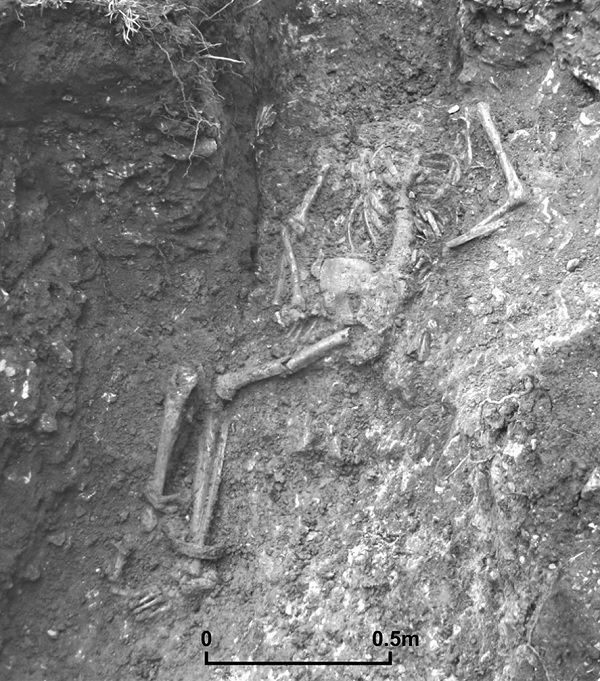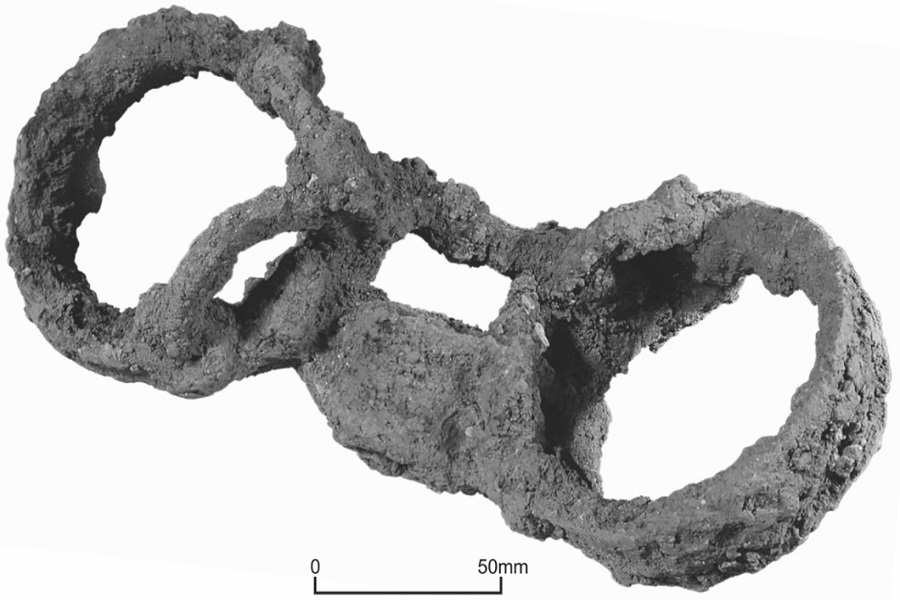It’s no great surprise to find Roman remains if you dig in your garden at Great Casterton. The crossing point of the River Gwash was the location of a fort and the next significant town north of Durobrivae on Ermine Street. What is very unusual is to find a skeleton complete with iron shackles around its ankles. A recently published report suggests that:
“The Great Casterton burial is perhaps the best candidate for the remains of a slave in Roman Britain.”
The partial skeleton was discovered in 2015 during the construction of a conservatory. The Lincolnshire Police were alerted but the body was proven to date from the third century (between AD 226 and 427 at 95% probability). A careful excavation was undertaken by archaeology contractor, MOLA. Their report is now available in full online.
Whilst we know forced labour and enslavement were ubiquitous features of the Roman Empire there is little archaeological evidence from Britain to help us understand their form, and how individuals were treated. We don’t even know whether the man at Great Casterton was a slave rather than a criminal though the shackles are similar to those associated with slavery in France and Germany.

The skeleton was located away from a nearby Roman cemetery and its position suggested that it had been thrown into a ditch rather than buried. The head and upper vertebrae were missing; this could be significant but may have resulted from digging of a ditch for modern services.
The shackles would have kept the legs within a distance of less than 250mm forcing a slow uncomfortable shuffling gait. The fetters included a locking mechanism operated by a key.



